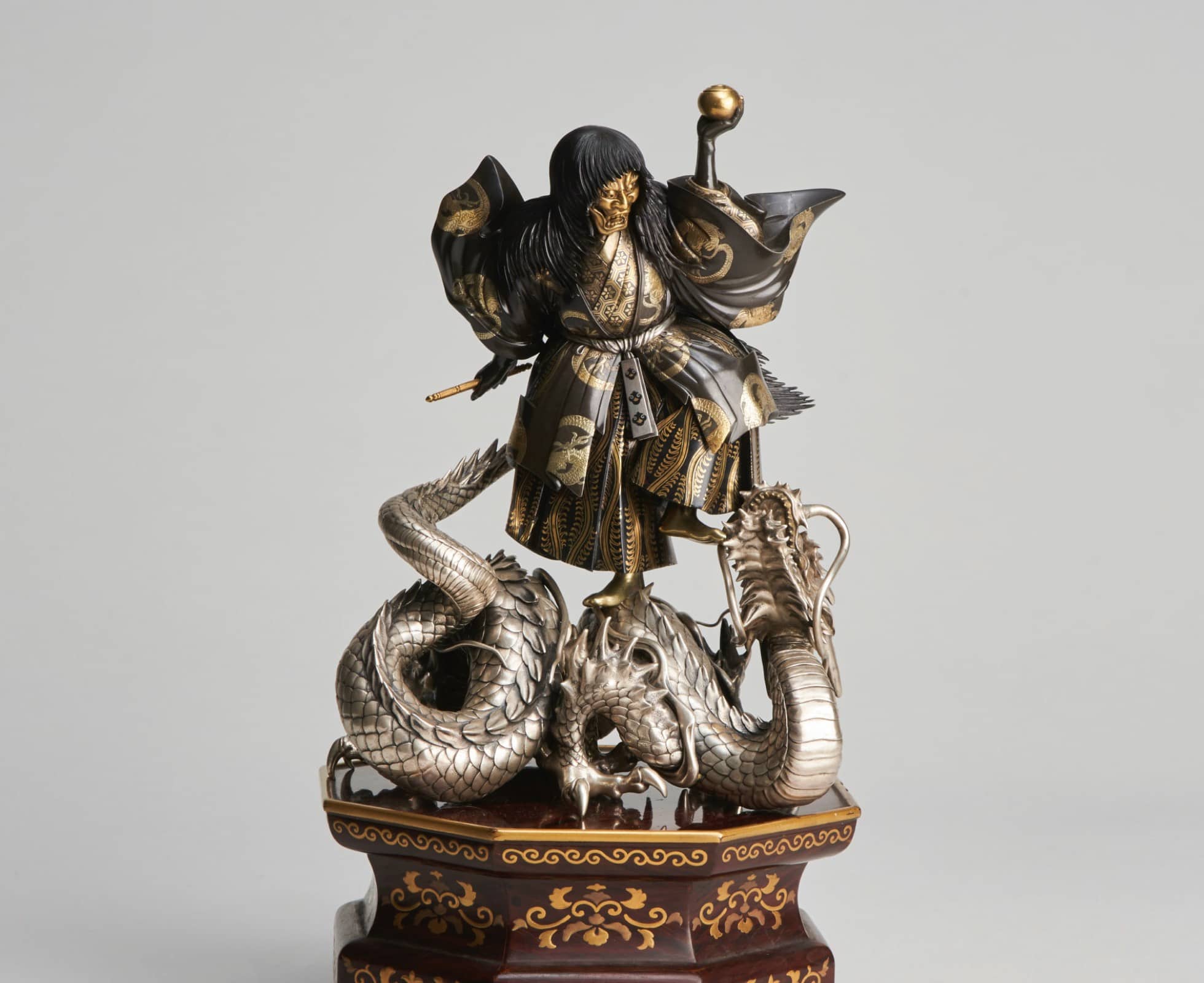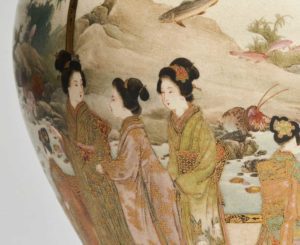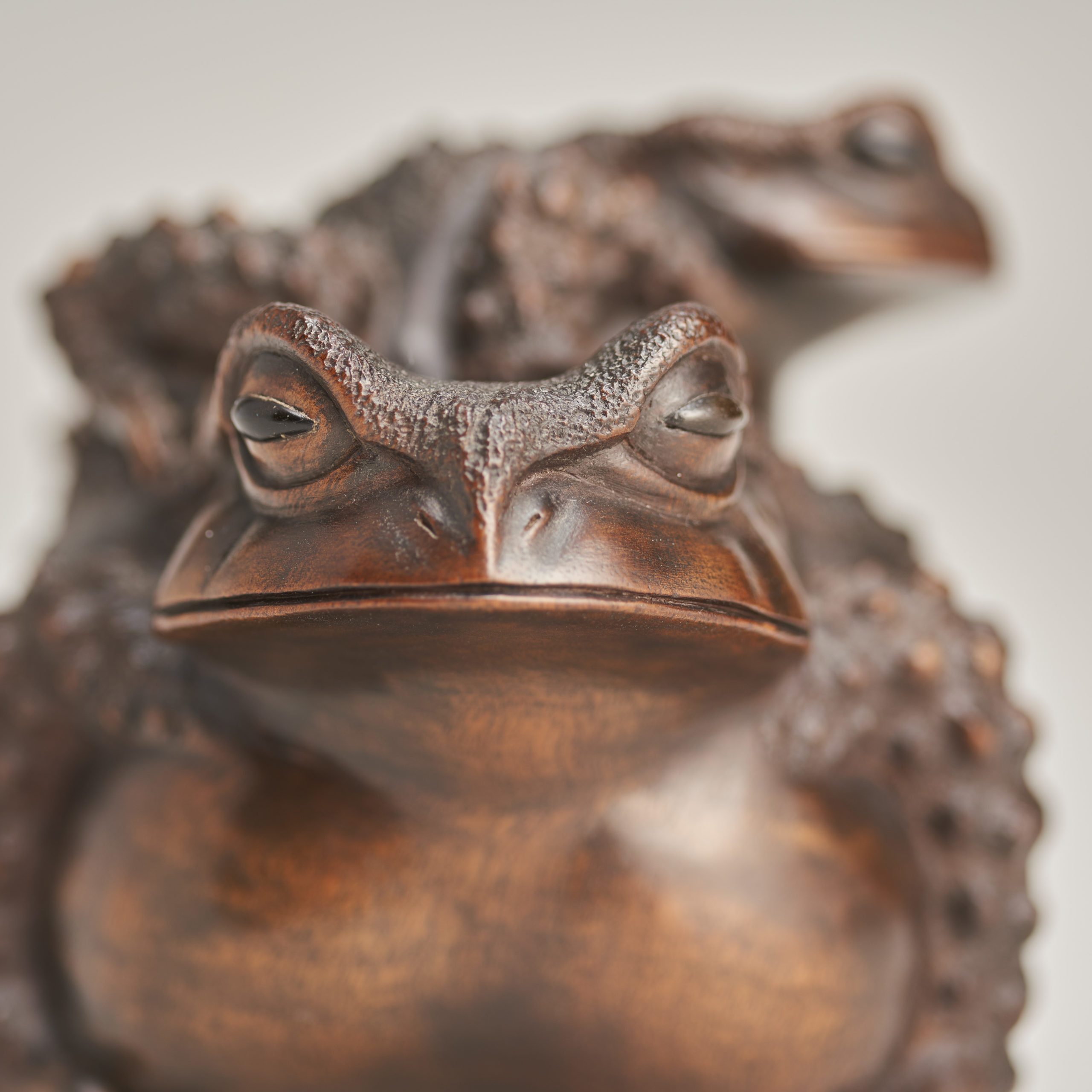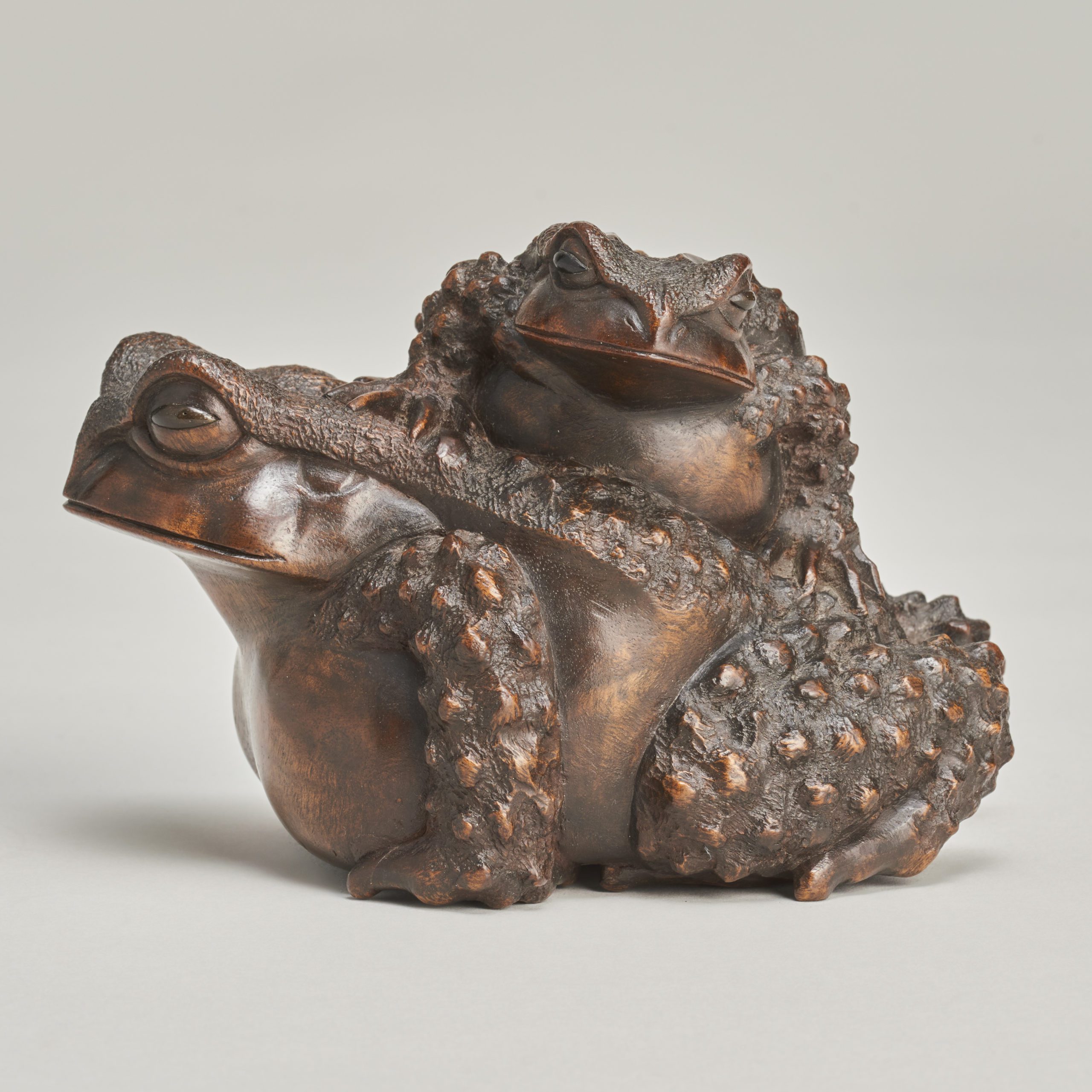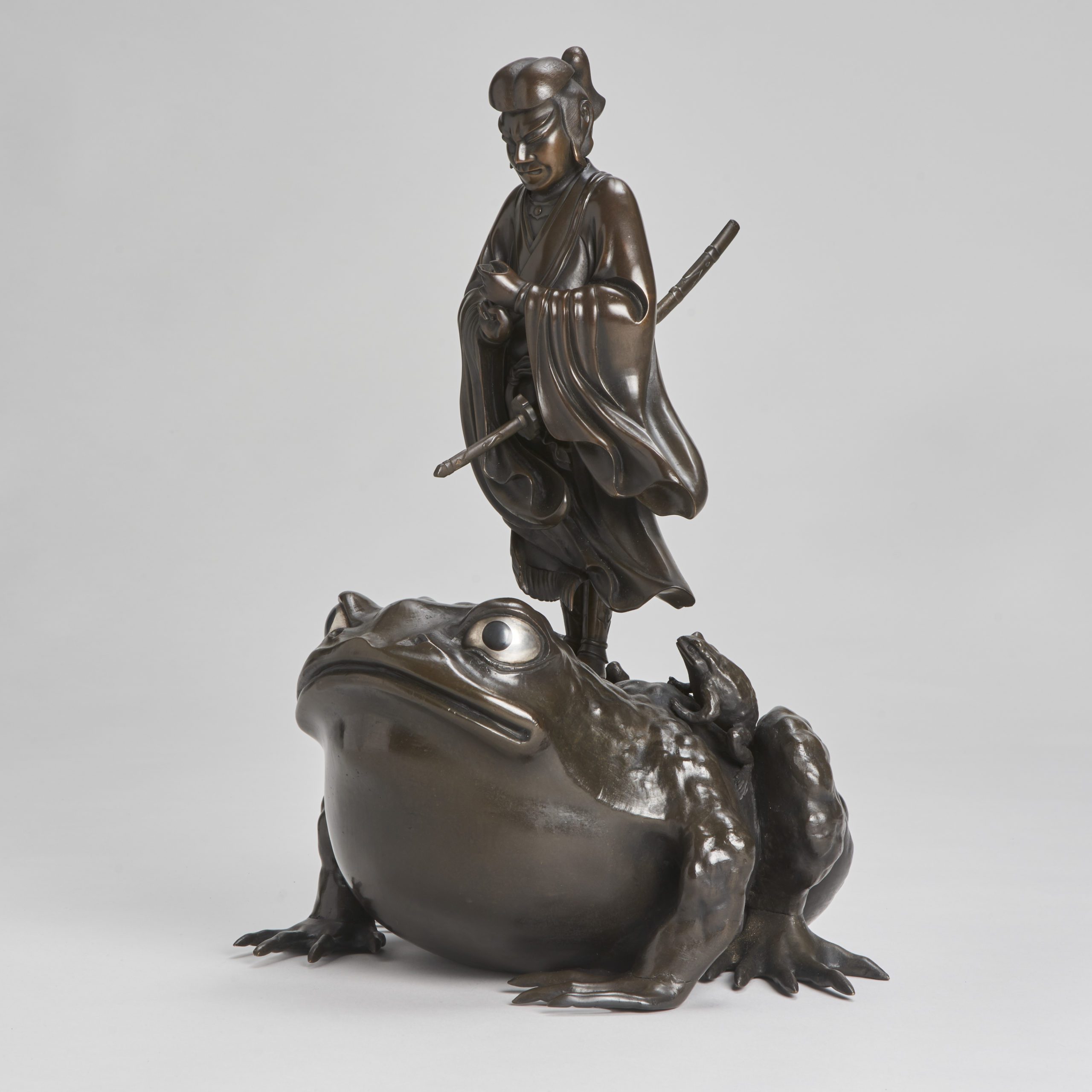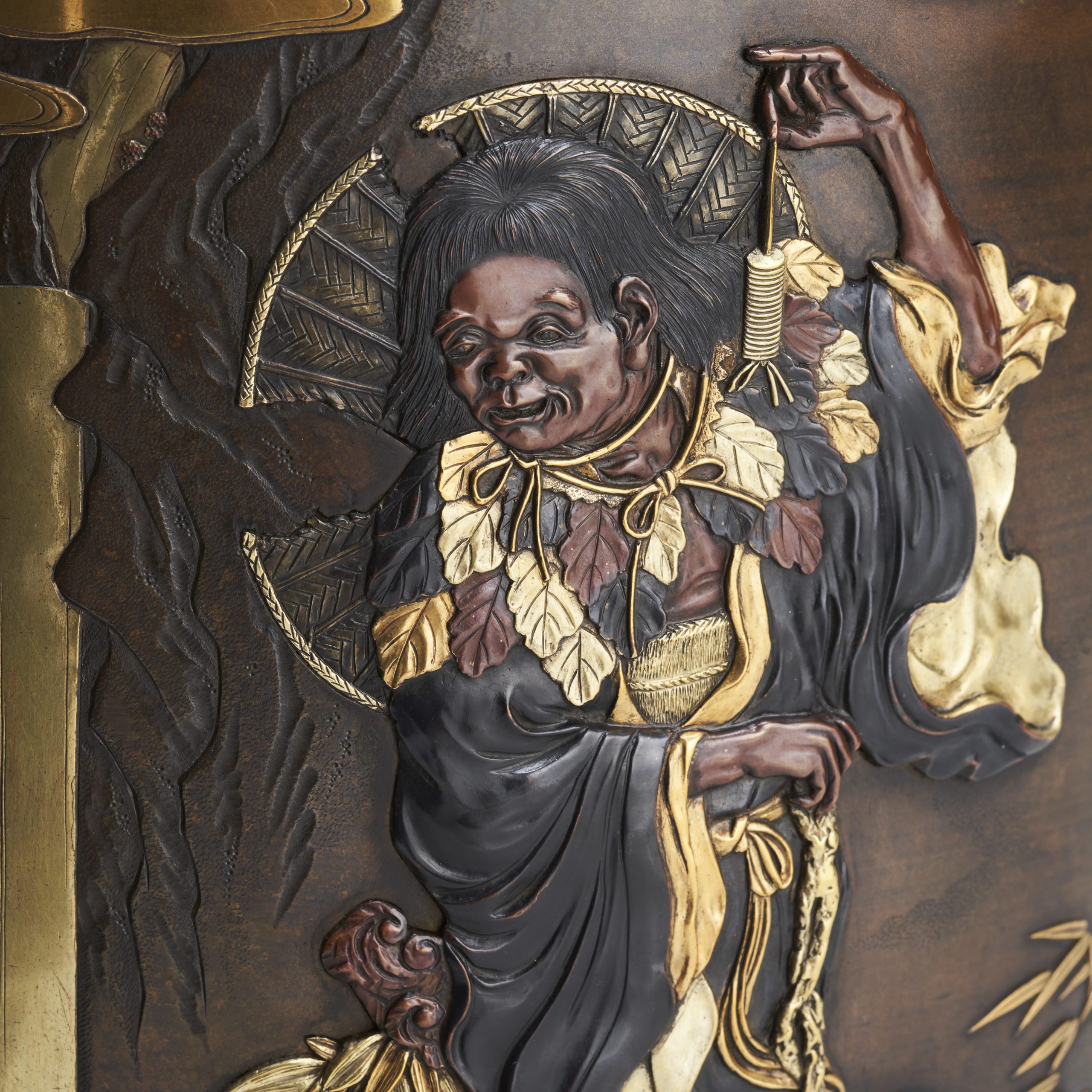We recently took this lovely wood-carved Okimono off the shelf to have it photographed for our website. Knowing that it was made from a single piece of Camphor wood, we gave it a gentle rub and we were delighted to get a faint yet distinctive whiff of the famous Camphor menthol fragrance.
This prompted us to look a little further into the otherwise potentially over-looked meaning and purpose behind this great Masanao carving.
Click the image to see more images of this charming Okimono.
Native to Southern China, Korea, India, Vietnam and Japan, the Camphor tree has been used for thousands of years to produce domestic furniture and decorative ornaments. Not just an attractive wood, the tree is known for its distinct, pleasant, menthol fragrance which very handily also acts as a natural repellent to moths and other unwelcome insects.
It’s possible that an Okimono such as this, as well as being something to admire, would also serve the practical purpose of fending off unwanted winged intruders in the home.
Click on the image for more information.
The Camphor tree is also a Japanese symbol of longevity with one example, (a giant in Kawago) supposedly more than 3,000 years old. Indeed, in more recent times, the tree has become associated with strength and triumph in the face of adversity, with many Camphors miraculously surviving the 1945 bombing of Hiroshima. As they sprouted new leaves and continued to flourish, the Camphor became the official Japanese tree of Hiroshima and gave hope to the millions of people rebuilding their lives after the devastating end of the Second World War.
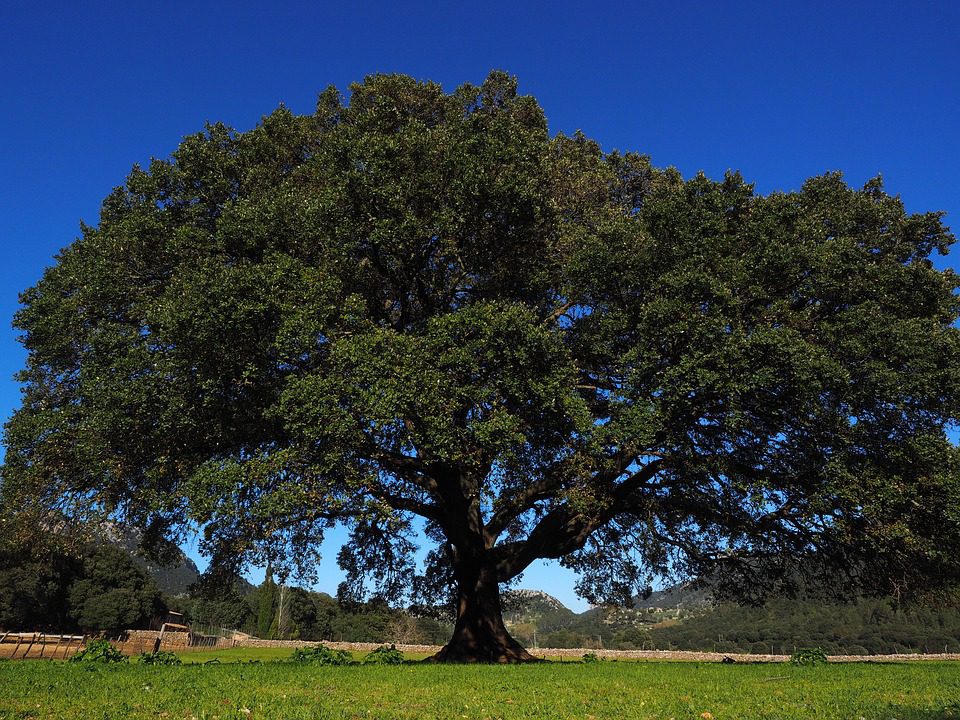
A giant Camphor tree in it’s native Japan.
Onto the subject of this Masanao carving. Toads appear in many popular Japanese folk-tales such as the legend of Jiraiya – a shape-shifting Ninja who used his magical powers to transform into a giant toad. You can read more our blog about Jiraiya by clicking here.
A majestic, large Bronze Okimono of Jiraiya standing atop a giant toad. Click here for more information.
Toads are also the symbol of another popular figure in Japanese legend, Gama Sennin.
An amusing large Bronze Okimono group depicting Gama Sennin and giant toads. Click here to see more.
Translating to English as “Toad Immortal”, Gama Sennin is always depicted with at least one toad. He is based on the 10th Century Chinese alchemist Liu Hai who discovered the secrets of immortality from a great three-legged toad. Game Sennin is a master of healing and he also has the ability to transform into a toad as well as being able to fly and release his spirit form from his body.
As a symbol of Immortality, Game Sennin is a hugely popular character in Japanese legend. Seen as a symbol of good luck and good fortune, it is common to find an effigy of The Toad Immortal at the entrance to homes and places of work to ward off misfortunes and evils.
Game Sennin depicted on an impressive pair of Bronze and mult-metal vases by the Miyao Company. Click here to see more information.
We hope you found this interesting. You can read more of our “Stories behind the art” by clicking here.

